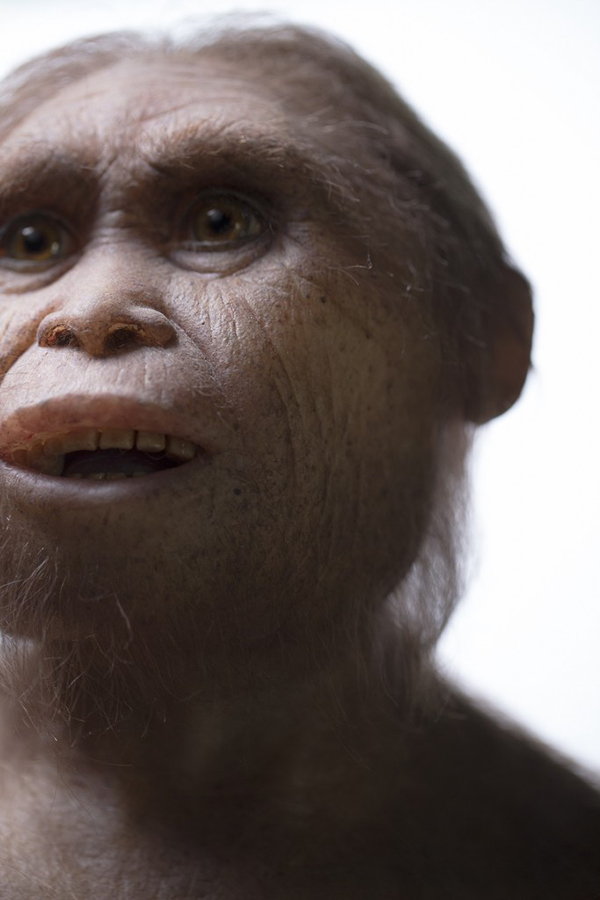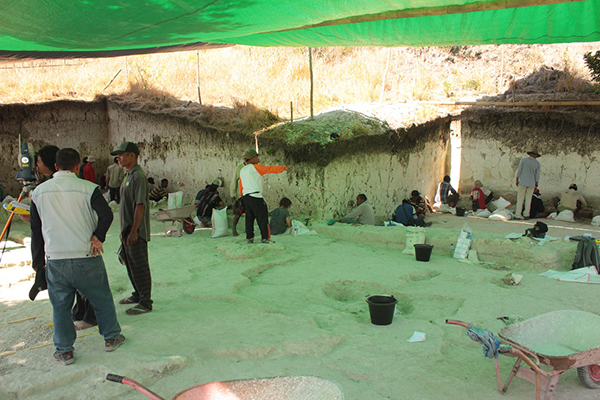
by Lucas Joel Wednesday, June 8, 2016

A reconstruction of Homo floresiensis by Atelier Elisabeth Daynes. Credit: Kinez Riza
Scientists first discovered fossils of Homo floresiensis — a species of extinct 1-meter-tall hominins nicknamed “hobbits” — in Liang Bua cave on the Indonesian island of Flores in 2004. Until now, H. floresiensis, thought to have lived between about 95,000 and 50,000 years ago based on recent evidence, was the only extinct hominin known to have lived on Flores, although artifacts discovered on the island dating to 800,000 to 1 million years ago pointed to earlier hominin habitation. Now, in two new studies published in Nature, researchers announce the discovery of hobbit-like hominin fossils found elsewhere on the island that are roughly 700,000 years old. The new remains, if confirmed, would extend the age range of the hobbit lineage, and may help researchers piece together why H. floresiensis became so small.
Scientists excavated the new fossils from a site 70 kilometers east of Liang Bua called Mata Menge, which is situated in a 400-square-kilometer “sedimentary depression containing … rock strata accumulated between 1.4 million years ago and 500,000 years ago,” said Adam Brumm — an archaeologist at Griffith University in Australia and lead author of one of the two new studies — during a press briefing on Tuesday.
The new fossils include an adult jaw fragment that is smaller than the smallest H. floresiensis jaw known to date, as well as six teeth, including two infant “milk” teeth, from at least three different individuals. The fossils’ morphologies are very similar to those of_ H. floresiensis_, wrote the second study’s co-lead author Yousuke Kaifu of the National Museum of Nature and Science in Japan in a letter sent to the press briefing. They indicate that there were “tiny, hobbit-like hominins as early as 700,000 years ago on Flores” that were likely “the direct ancestor[s] to Homo floresiensis.”

The excavation site at Mata Menge on the Indonesian island of Flores in May 2016. Credit: Dr. Gerrit van den Bergh/University of Wollongong, Australia
More fossil material is needed to definitively assign the new remains to the H. floresiensis lineage, but the find nonetheless “sheds new light on the origins” of the hobbit, said paleontologist Gert van den Bergh of the University of Wollongong in Australia, a co-lead author on both studies. For one thing, he said, the fossils suggest hobbits evolved their small body size early in their history. One of the fossil teeth, a lower molar, “has characteristics that point to a Homo erectus ancestry,” he said, but is much smaller than “any known _Homo erectus _molar.” Homo erectus, another hominin species thought to have lived between about 1.9 million and 143,000 years ago, had migrated to the Flores region by about 1.6 million years ago. Although some scientists have suggested that H. floresiensis descended from other hominins, like Homo habilis, van den Bergh said that the new molar “adds crucial support to previous claims that H. floresiensis is indeed a kind of dwarf H. erectus.”
© 2008-2021. All rights reserved. Any copying, redistribution or retransmission of any of the contents of this service without the expressed written permission of the American Geosciences Institute is expressly prohibited. Click here for all copyright requests.